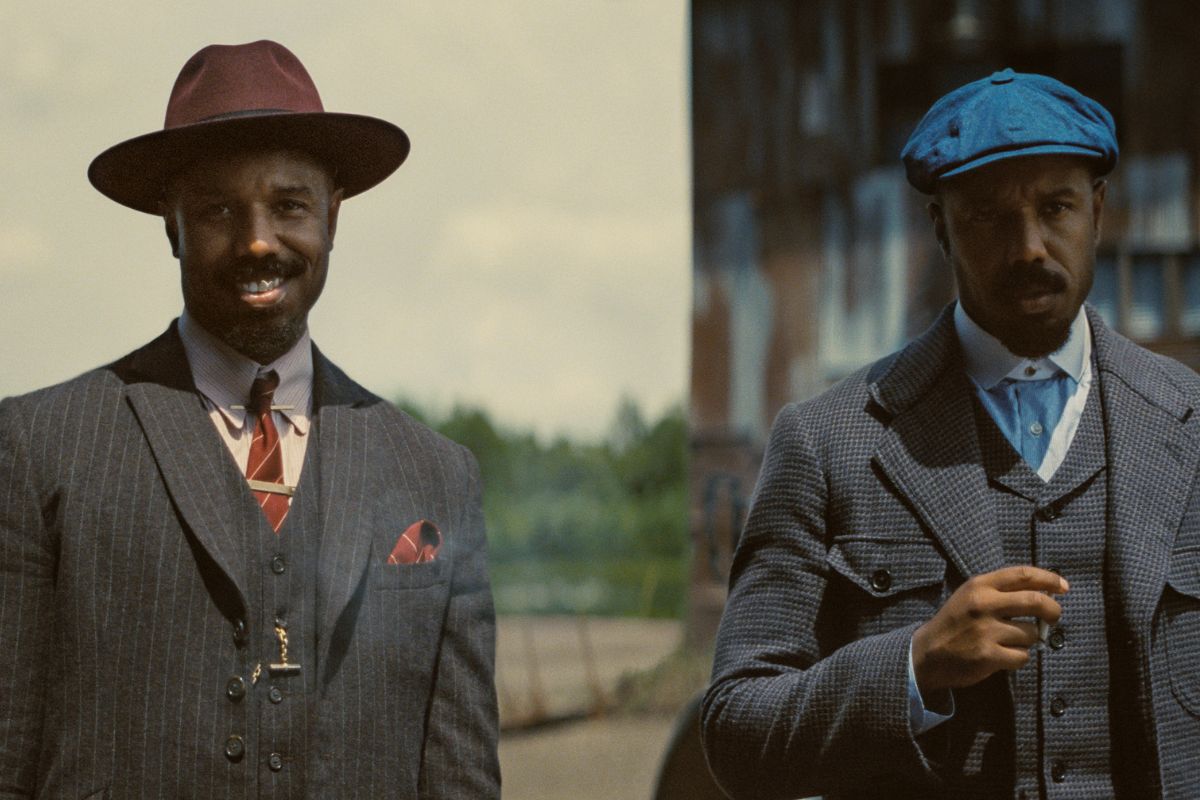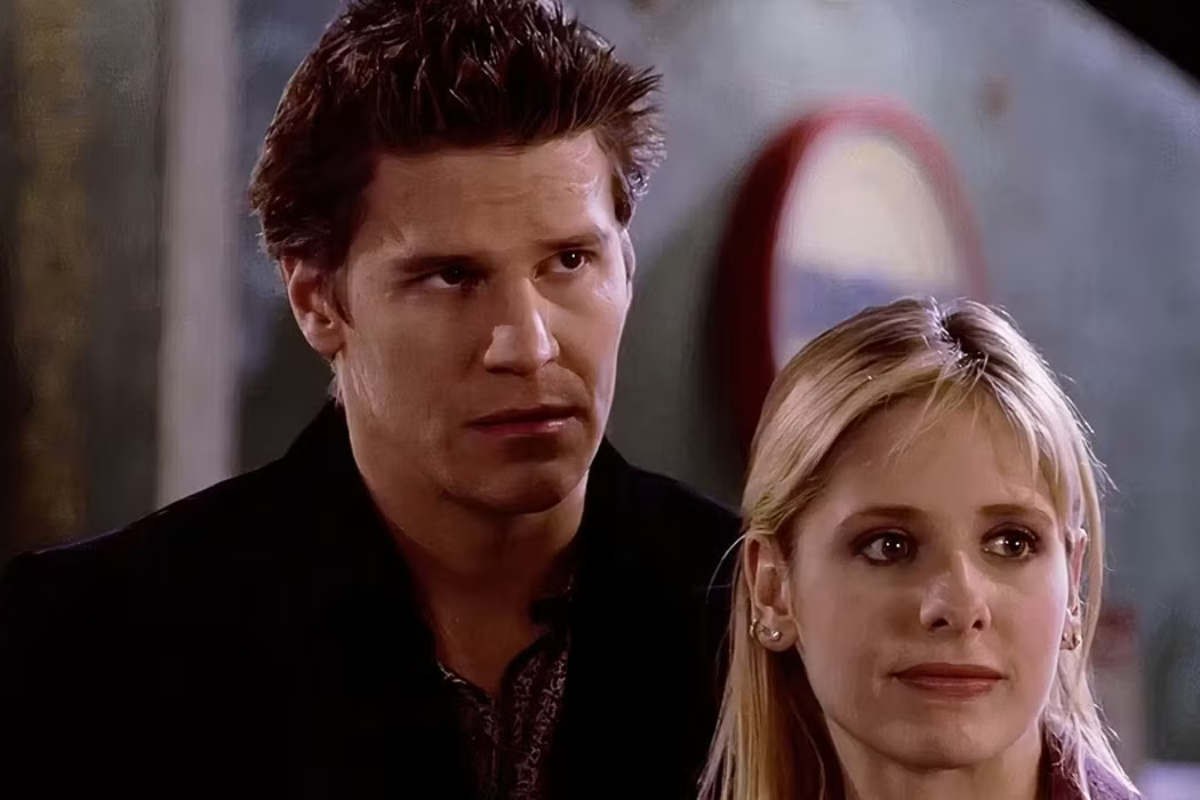SCRIPT SECRETS: Creating Unlikable Protagonists
William C. Martell explores creating unlikable protagonists in a likable way, using examples from Can You Forgive Me? and Pollack to highlight the best approach to adding dimension and interest to your more difficult characters.
William C. Martell explores creating unlikable protagonists in a likable way, using examples from Can You Forgive Me? and Pollack to highlight the best approach to adding dimension and interest to your more difficult characters.
Not all protagonist's are nice guys and gals. Sometimes your lead character may be a complete bastard—how do we keep the audience from hating him?
We only hate those we don't understand... so make sure we understand those bastards. I always say to “take us inside the character”—to show the audience the world as the character sees it, so when the character makes a decision or does something we may find repulsive, at least the audience understands the reasons behind the actions. They may not do those terrible or crazy or extremely risky things themselves, but they understand why this particular character would do them. This is the difference between a movie that the audience watches and a movie that the audience experiences... and it’s all a matter of providing the audience with the information they need to understand the character.
That’s the screenwriter’s job.
There is already Oscar buzz surrounding Melissa McCarthy’s performance in Can You Ever Forgive Me, which shows the power of the “Creative Bastard” character. 2000's Oscar contender in the "Creative Bastard" category was Ed Harris in Pollock. These two films have similar subject matter—Creative Bastards and the people who love them (Maria Gay Harden won the Best Supporting Actress Oscar for Pollock, and Richard E. Grant steals every scene he’s in and will probably get a Best Supporting nomination). This movie makes up for McCarthy’s The Happytime Murders and Life of the Party, and allows her to play the ultra-prickly Lee Israel, who is the quintessential “Creative Bastard.” Israel was a writer of celebrity biographies with absolutely no people skills (it’s probably fair to say that she hated people) who became a convicted felon when she used her writing skills to become a forger of collectable celebrity letters. She is an unpleasant character who does terrible things... and yet the audience understands why she chooses this path of crime, which seems crazy for a middle-aged woman in New York City’s literary world.
How did the writer do this? Let’s look at the beginning of the story, when Lee Israel is introduced to the audience...
TAKING US INSIDE
The movie opens at 3:30 in the morning in some nameless glass and chrome office building where frumpy middle-aged Lee Israel is working at some entry level proofreading job for some publishing company. She is also drinking a scotch on the rocks. A pair of well-dressed young women pass her desk in the endless the cube farm, and one of them says, “She’s older than my mother. Kill me if I’m doing that at her age.” Lee grumbles, “I’ll kill you, if you ask me nicely.” One of the other proofreaders asks her to be quiet, another comments that it’s against the rules to eat or drink at her desk, to which Lee replies loudly, “Fuck off!” A voice asks what did she say? And she repeats herself and turns around, ready for a fight. There is a nice bit of suspense here as the camera holds on her as her expression changes when the unseen person gets to her cubicle. When we finally see that it is her boss, he tells her to “Pack up now!”—she is fired from this crappy job. She drinks the rest of her scotch, throws the ice in her glass in the direction of the wastebasket, and leaves.
In her ancient and extremely messy apartment, she tries to feed her cat—but it won’t eat, then she climbs into bed as the sun is rising... and the construction workers are using jack-hammers somewhere nearby.
That’s our introduction to the character, and notice how for every terrible thing she does there is also a relatable thing. Due to her terrible attitude, we can guess why she has this crappy job, but it is still a crappy job, and she is fired from it. And as someone who has worked a graveyard shift before, those morning jack-hammers provide some sympathy for her. She’s not a pleasant person and she probably brought all of this upon herself, but she still has to deal with “all of this.” She is a 51-year-old woman who likes cats more than she likes people.
Later, she sits down to the typewriter... and can’t write.
Then later, she puts on lipstick, still dressed mostly frumpy, and takes the subway cross town to her agent’s luxurious house where there’s a party. A very fancy literary party. An alcove has been turned into a coat check area with a uniformed attendant. Hey, free top-shelf booze and free food—shrimp and other gourmet goodies. She drinks glass after glass of single malt scotch, fills her pockets with food for later, and even steals a couple of rolls of toilet paper from the bathroom cupboard. What’s great about this scene is that all around her are other writers who are successful, which serves to point out her failure. Contrast is a great tool to *show* character, One blow-hard male writer, supposed to be Tom Clancy, talks about how writer’s block is just an excuse for lazy writers. So the background conversations all point out Lee’s problems—they are like voices in her head calling her a failure. Her agent Marjorie (Jane Curtain) spots her and goes up to her (Lee is kind of crashing this party) and they have a tense conversation about how Marjorie will not return her calls. Lee claims she has new, interesting stuff. Marjorie says she might return call her—no promises. That’s as good as it’s going to get for Lee.
Lee leaves, stopping at the coat check and pointing to a coat, claiming that it is hers. The uniformed person gives her the coat and she leaves the house... which builds some suspense as we wait for her to get caught stealing the coat. She gets away with it. Always looks for things that are “two-fers”—they show character and establish story and plot elements. Here we have a minor crime that is kind of an FU to Marjorie, which opens the door to major crimes (kind of an FU to the literary world) later.
At home she tries to share some of her stolen shrimp with her cat, who still won’t eat. Something is wrong with the cat.
There’s another thing in that scene that sets up her later criminal activities: there’s a movie based on a play by Lillian Hellman on TV, and Lee is making comments that show her knowledge of Hellman’s work and writer’s voice.
Lee takes her cat to the vet, where they refuse to do anything because she still owes them $82, they will settle for half, but all Lee has is $14. Where will she get the rest of the money so that she can save her sick, old cat?
She goes to a used bookstore to sell two huge bags of books, but the snooty clerk behind the counter only wants two of them and calls the rest “garbage” (and the books *are* in very poor condition). She gets angry and says the bookstore sells books that she has written. The bookstore clerk points to the remaindered table—75% off—where her latest book can be found. He offers her $2 for the used books he is accepting and she takes it. Still not enough to get her cat to the veterinarian...
At home, her building manager stops her and says she owes three months back rent. He doesn’t want to evict her, but... She says she will have the money soon. But the audience knows that isn’t going to happen. Lee may be a complete bastard who hates everyone except her cat, but she is a middle-aged woman who will probably be thrown out on the street. Do we want that to happen to her?
She has $16 towards the $41 she needs for the vet to probably save her cat’s life, so what does she do? She goes to a neighborhood bar to get drunk... where she meets Jack “Handsome” Hock (Richard E. Grant) an aging Gay man who may or may not be homeless. He recognizes her from a time they met years ago at a party (when she was a successful writer) where he got so drunk he thought the closet was the bathroom and pissed on thousands of dollars of furs owned by other party attendees. This is the beginning of a great friendship subplot between the two that is directly related to the story (he becomes an accomplice in her forgery scheme) and gives her someone to care about. She hates everyone in the world... except her cat and Jack.
But her cat is dying. Lee looks at her most prized possession, framed on the wall of her apartment: a letter to her, written by movie star Katharine Hepburn. She decides. to sell it to save her cat. Once she gets the money, she takes her cat to the vet.
But how will she pay her back rent to keep from being evicted?
CRIMINAL ACTIVITY
She barges into her agent’s office, and is told that nobody wants her current project (a Fanny Brice biography) and that nobody really wants *her.* Marjorie tells her that her blessing is her curse: Lee has an amazing ability to disappear into her work, to perfectly mimic the voice of the celebrities that she is writing about... but she has no voice of her own. That’s the problem with trying to sell a Lee Israel book: there is nothing distinctive about Lee Israel.
Lee goes back to the Fanny Brice book anyway, and while doing research finds a letter written by Fanny Brice hidden in a book. She makes sure that nobody is looking before sliding the letter into her purse.
Okay: what is Lee thinking when she steals that letter? And why does the audience know what she is thinking? All of this has been set up, step-by-step, throughout these opening scenes from the film. The audience has been brought inside the character and understands the character—hey, she may be a complete a-hole, but she’s going to be a middle-aged homeless woman if she doesn’t do something. And finding that Fanny Brice letter allows her to do something. Something criminal.
When she takes the letter to a buyer thinking that she will make enough to pay her back rent, she is told that the letter has only a small value because it’s kind of boring. If it had been more personal and more interesting, it would be worth more. Lee decides not to sell the letter and leaves...
Okay: what is Lee thinking when she leaves? That curse/blessing of Lee Israel is the perfect tool to take this bland Fanny Brice letter and, um, embellish it. Making it worth more money and maybe allowing her to prevent being thrown out onto the street. By giving the audience all of the pieces, they can assemble them and understand what Lee is thinking and what Lee is planning to do. The audience has been taken inside the character by showing us her life and also showing us all of the things that she knows, so that we know. When the character makes a decision, we understand that decision. We have seen all of the elements of that decision.
So when Lee sees an antique typewriter in a thrift store window?
When Lee buys a box of really old paper from a stationery store?
When Lee begins studying the typeface and letterhead and paper stock of very expensive collectable letters written by literary celebrities?
When we see a shot of Lee’s apartment with a dozen antique typewriters each labeled with a literary celebrity’s name?
The audience knows why Lee is buying old typewriters and old paper and studying expensive collectable letters because they have been taken inside her life by screenwriters Nicole Holofcener and Jeff Whitty. Nothing needs to be explained, the opening scenes of the film allow us to understand this “Creative Bastard” so that the audience can think the same way that she is thinking and know what she is planning to do... and doing.
Can You Ever Forgive Me? Has great performances by McCarthy and Grant and Dolly Wells as Anna—a shy bookstore owner who provides a possible love interest for Lee Israel... except she sold some forged documents to her, so we are always waiting for the other shoe to drop... and it does as the FBI moves in on Lee. Because our “Creative Bastard” is involved in criminal activities, the screenplay uses suspense to help create an additional emotional bond between Lee and the audience.
LEAVING US OUTSIDE
Pollock (2000) shows painter “Creative Bastard” Jackson Pollock abusing everyone around him. He's a tortured soul who spends much of his time getting drunk. He openly cheats on his wife, and dies when he drunkenly plows his car into a tree—killing an innocent passenger and seriously injuring his mistress. But unlike Forgive Me, in this case the audience hated him. Why? Because the story never took us inside the character—we never understood WHY he did these things. At an IFP screening of the film, one audience member asked Harris how he could make a film about such a vile, despicable person. Harris said he didn't see Pollock that way—he saw him as a tortured artist. The problem is—the majority of the audience at that screening didn't. We just saw him as a bastard... and we didn’t understand his creativity at all. We saw what he did, but with no understanding of why he did it.
I believe if we had understood Pollock, we could have felt sorry for him when he struck out at those who loved him.
We never understood the painter's frustration, which may have been the reason for his anger. There's a point in the film where Pollock accidentally dribbles paint, and has an artistic "breakthrough." His wife sees the dribbles and says, "You've done it! You've broken through!" This could have been a big emotional moment in the film, but instead it provoked unintended laughter in the cinema. The audience didn't know what Pollock's goal was, so they had no idea when he had achieved it. So the wife's comments seem incongruous and psychic—as if she *knew* what Pollock's style was going to be all along.
What if we had been taken inside the character's thought process? What if the film had opened with Pollock drunk with his artist pals, talking about how the mechanical aspects of painting get in the way of the artist—how the brush controls the work instead of the artist. "If there was some way to remove all of those things that come between the artist and the canvas..." Then we would have understood Pollock's rage when he was unsatisfied with his paintings. We would have understood his frustration. If we understand the goal, we *feel* the frustration of not achieving it. We also can feel the joy of the breakthrough... and the anger when some members of the art world don't understand what you have achieved.
It’s all about giving the audience the information to understand the character, as they did in Forgive Me. In early scenes we see Pollock experimenting with applying paint from the tube, without a brush... that would make sense to us and would have been a very exciting scene if we understood Pollock's goal. But that information was never given to the audience through dialogue nor through actions. The audience was kept outside of the character, we never understood his motivation or his methods or anything else.
It doesn't matter if a character on screen is emotional... what matters is if those emotions are experienced by the audience. Bring us inside your troubled lead characters and make us feel what they feel. We only dislike people we don't understand. Even a Creative Bastard like Lee Israel can be an interesting character—while still being a bastard—if we understand them.
There's a basic choice in your script—to take us INSIDE someone's life, or to just observe them from the OUTSIDE. Write about PEOPLE or write about THINGS.
I don't think there's any choice at all.
Your Story Checklist:
1) Does your story show the reader or audience the information *before* your protagonist makes their decisions?
2) Are the actions or dialogue clear enough that the reader or audience understands the motivations?You won’t know this until others read your work and give you feedback.
3) Will those motivations translate from the page to the screen? One of the reasons why there is so much concern over “unfilmables” is that often new writers leave motivations on the page and don’t find ways to get them to the audience.
4) Are the motivations for your “Creative Bastard” or Problem Protagonist or Antihero strong enough to balance whatever they do? That doesn’t mean that they need to have a sister than needs an operation, but that for every action there is an equal and opposite reaction. It has to make sense!
Can You Ever Forgive Me? Does a great job of taking us step-by-step into Lee Israel’s life so that we understand her decision to begin a life of crime, and we even understand her in the prison sentencing scene when she says that she has enjoyed her criminal period more than what came before it. We enjoyed watching it! She turned her curse into a blessing... of sorts... and made a lot of money, before being sent to prison. The key to any character is to understand them. If the audience doesn’t understand their motivation and methods, it’s just a story about things not people.
More on Problem Protagonists in the Creating Strong Protagonist Blue Book.
Get more advice in William Martell's on-demand webinars to help elevate your screenplays!
DOWNLOAD NOW!
Scriptmag.com is a participant in the Amazon Services LLC Associates Program, an affiliate advertising program designed to provide a means for sites to earn advertising fees by advertising and linking to Amazon.com and affiliated websites.
William C. Martell has written 20 produced films for cable and video, including three HBO World Premieres, a pair of Showtime films, the thriller Hard Evidence (Warner Bros.), and the family film Invisible Mom. He wrote an original horror script for a popular streaming service that was released October of 2023. He is the author of The Secrets of Action Screenwriting. Follow William on Twitter: @wcmartell.







